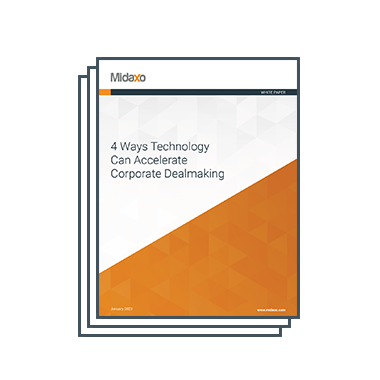Post-merger integration (PMI) is a fundamental stage to realizing the value of an M&A deal. It is a complex process, usually occurring under extreme time pressure while maintaining business continuity. There is no one-size fits all approach to successful post-merger integration. However, careful planning, focusing on the strategic objectives of the deal and the identification and capturing of synergies can help maximize deal value.
The actions of the First 100 Days will bear huge consequences on the value created by an M&A deal. Management of this sensitive time is a fundamental contributing factor to deal success or failure. The First 100 Days is a time of anxiety and uncertainty for Buyer and Target alike. It is a time of change and provides management with the opportunity to create the right first impression, capture synergies, maximize deal value and establish the direction for the future. It is also the time of greatest potential loss of value.
It is inevitable that some amount of information will be withheld from a Buyer pre-deal. Only upon deal close will the Buyer benefit from full insight into the Target and gain access to accurate information on which to base implementation plans. Furthermore, not all the synergy benefits originally identified in the deal will prove to be achievable – the foremost challenge for management at the outset of the post-merger integration steps is therefore to identify how value can be captured from the newly combined organization via synergies and cost savings in a timely manner.
The PMI process will likely be time-pressured and unfamiliar. Furthermore, it is a highly multifaceted process – often necessitating changes in a company’s business operations, people, processes, culture and structure. The bringing together of two companies experiencing change (perhaps for the first time), while at the same time ensuring that business continues as usual, is a challenge that should not be underestimated and one requiring the utmost level of planning.

Speed is of the essence when it comes to PMI.
It is important that the PMI process is approached with speed in mind. Investors typically expect to see synergies captured and cost savings realized within 12-24 months of deal close. The longer the PMI process is drawn out the more likely it is that potential synergies will be lost, cost savings and economies of scale will not be realized, management will become disillusioned and key staff will leave.
PMI is not a core attribute for most companies. Rather, it is a process that will be encountered once (or perhaps a handful of times in the instance of a serial acquirer). PMI requires a different skill set than is required for usual business operations, with the approach taken dependent on the strategic rationale behind the deal and the future intended strategy of the new organization.
Guiding Principles
The PMI process should be set against the backdrop of the deal rationale and aligned to the strategy driving the deal. Areas which may be considered include (i) what the underlying logic of the deal is (ii) if the deal is to involve the Buyer absorbing the Target into its operations or a “merger of equals” (iii) which areas of the Buyer and Target are to be integrated and which are to remain as standalone (iv) which systems will be adopted – those of the Buyer or a combination of the best from both entities and (v) what are the expectations of investors – for instance, how soon post-deal do they expect a return and are their expectations realistic given knowledge of the challenges which lie ahead.
Closing & Day One
“Closing” refers to the date when the SPA (Sale/Share Purchase Agreement) comes into force and ownership of the Target transfers from Target to Buyer. This is commonly called “Day One” – being the first day the Buyer is the owner of the acquired operation, or that the operations work as one legal entity in the context of a merger of equals. This is when the integration of the companies commences.
Four important concepts that should be front and center on any post-merger integration checklist and that work-streams must focus on during this critical time are:
- Communication
- Culture
- Operative structure
- Systems & controls
Communication
Good communication is the way to build trust, develop motivation and share important information. Well-planned and well-implemented communication enables work-streams to lead a PMI project more effectively. It can prevent the negative impact of rumors and help to unify different parts of the new organization.
If there is a long delay between the original announcement and the closing of the deal, important elements may need to be communicated again to personnel and other stakeholders. At this point, stories about new key individuals and product and service material from the acquired company can be used to enhance the message. Communication issues may include:
- What needs to be communicated on Day One?
- What remains the same?
- What changes immediately (redundancies, close/mode of operations, etc.)?
- What changes in the near future?
- Where can more information be found?
- Who answers any questions?

Culture
People and culture are at the heart of the new organization’s success. It is therefore critical to retain key people (particularly leaders), to pay attention to cultural sensitivities and identify the type of culture that will be accepted by the Buyer and Target.
The two organizations coming together will have their own cultures, norms, values and rules – perhaps fashioned over many decades. Therefore, one of the most significant challenges of the PMI process lies in determining which culture to adopt. Typically, the Buyer will intend to maintain their culture. It is important that the desired culture is discussed from the outset and put into practice as soon as possible. The CEO downwards must manage and encourage the adoption of the chosen culture. Compensation/benefits systems to reward behaviors fitting with the chosen culture may be considered. Furthermore, new organizational core competencies may be mapped out in order to harmonize culture. Carefully selected leadership, spanning line managers to executives, will facilitate making the vision a reality and foster the ideal culture for the new organization. In the context of M&A people are a sensitive issue and may be resistant to change. Therefore, a culture gap assessment/diagnostic could be carried out (such as a survey covering cultural and social matters).
Operative Structure
Clear communication about the new management and operative structure/reporting procedures is required from Day One. If this information is not available, or is poorly communicated, there may be a tendency for personnel to follow their familiar habits. Initiating change later on can be very difficult.
When personnel changes are planned, HR should play an important role. In order to support the management in structural planning and in choices for managers, their teams and future staffing, HR must be provided with an understanding of the future strategy.
Decisions about the new operative structure and systems should be made when the new organization’s strategy and goals have been agreed upon. Typically, the legacy organization structure continues until that point. How quickly the new structure can be finalized depends on the size and complexity of the deal. Unless there has been a decision to keep operations separate, a joint operating structure is normally decided upon and communicated within three months (approx. 100 days). Once the Target and its personnel are better understood, modifications are normally made to the structure after six to twelve months. If a large M&A deal involves multiple markets, entities may need to be integrated in each of the locations.
Systems & Controls
Continuation of financial and sales reporting is crucial for management to be able to control the operations of the Target and the progress of integration. It is recommended to have clear and detailed instructions with ready-made forms and templates available to the acquired entity’s financial team on Day One. Systems may be different, but the new business, market and service areas need to be clearly briefed on the desired format of reporting. If operational structures are not finalized at this point, temporary management systems and controls need to be established. These may include comprehensive reporting and systematic management practices such as regular management team meetings – thus reinforcing strong communication.
Takeaway
While perhaps daunting at the outset, if broken down into its component parts and given enough attention early on in the deal process, post-merger integration can be the most powerful tool to realizing the value of an M&A deal. In fact, many organizations, particularly serial acquirers, create their own post-merger integration plan template that they can customize and apply to deals on a continuing basis.
Learn more about our comprehensive playbook for post-merger integration.





